Miter Saw Guide: Single VS Dual Bevel
- December 4, 2023
- 0 comment
Welcome to the comprehensive guide on Miter Saws, where we delve into the crucial decision-making process of choosing between Single and Dual Bevel options. Whether you’re a seasoned carpenter or a DIY enthusiast looking to elevate your woodworking game, understanding the nuances between these two types of Miter Saws is essential. A Miter Saw is a cornerstone tool in any workshop, offering precision and efficiency in angled cuts. The Single Bevel and Dual Bevel Miter Saws represent distinct approaches to this essential task. In this guide, we’ll break down the differences between the two, helping you make an informed decision based on your specific needs and the projects at hand. From the fundamental features to the advantages and disadvantages, we aim to provide you with the insights necessary to select the perfect Miter Saw for your woodworking endeavors. Let’s embark on this journey to unravel the mysteries of Single VS Dual Bevel Miter Saws, empowering you to make the right choice for your craft.
What You Need To Know About Single-Bevel Miter Saws

Single-Bevel Miter Saws are a practical choice for woodworking enthusiasts seeking simplicity and efficiency. These versatile tools allow adjustments in one direction, either to the left or right, making them ideal for those who predominantly work on projects with single-direction bevel cuts. Known for their straightforward design and ease of use, single-bevel miter saws are often more affordable than their dual-bevel counterparts, making them an attractive option for beginners or those on a budget.

While these saws excel at making miter and bevel cuts independently or together, they do have limitations when it comes to tasks requiring bevel cuts on both sides of the workpiece. Users must flip or reposition the material to achieve matching bevel cuts, adding a bit more effort and time to intricate projects. Despite these considerations, single-bevel miter saws remain a reliable choice for those prioritizing simplicity and versatility in their woodworking endeavors.
BAUER 12″ Single-Bevel Compound Miter Saw
| Blade size | 12 in. |
| Speed (max) | 3800 RPM |
| Amperage | 15 |
| Bevel angle | 48° left, 3° right |
| Cut Capacity Vertical | 5-1/8 in. |
| Arbor size | 1 in. |
Pros and Cons of Single-Bevel Miter Saws
Pros:
- Cost-Effective Choice: Single-bevel miter saws are generally more budget-friendly, making them a practical option for those conscious of their spending.
- User-Friendly Design: With a straightforward setup, these saws are easy to use, making them particularly suitable for beginners or DIY enthusiasts.
- Portability and Maneuverability: The lighter weight of single-bevel saws enhances their portability, allowing users to move them easily around the workshop or job site.
- Versatility for Many Cuts: Despite being single-bevel, these saws can handle a variety of cutting tasks, accommodating both miter and bevel cuts independently or simultaneously.
- Suitable for 90-Degree Angles: If your projects primarily involve 90-degree cuts, a single-bevel miter saw can efficiently meet these requirements.
Cons:
- One-Directional Bevel Adjustment: The main limitation is the single-directional bevel adjustment, requiring the repositioning of the workpiece to achieve bevel cuts on both sides.
- Efficiency Challenges for Complex Projects: In projects demanding bevel cuts on both sides of the material, the single-bevel design may extend work times and require additional effort.
- Uniformity Challenges: Achieving uniformity in matching bevel cuts can be challenging due to the need for repositioning, potentially impacting the overall aesthetics of the finished work.
- Not Ideal for Precision Work: In tasks like crown molding that demand precise and matching cuts, the limitations of a single-bevel saw become more pronounced.
- Limited Advanced Features: Single-bevel miter saws may lack some of the advanced features found in dual-bevel models, restricting their capability for certain specialized tasks.
Importance of Single-Bevel Miter Saws in Woodworking
- Affordable Entry Point: The cost-effectiveness of single-bevel miter saws makes them instrumental for beginners entering the woodworking domain. This affordability enables individuals to initiate their woodworking journey without a substantial financial commitment, fostering inclusivity and exploration.
- User-Friendly Design for Skill Development: The user-friendly nature of these saws caters to woodworking novices. Their straightforward setup and operation act as a learning platform, allowing beginners to quickly grasp essential skills in making miter and bevel cuts. Single-bevel miter saws, in this context, become not just tools but educators, nurturing the growth of woodworking expertise.
- Versatility for Diverse Projects: Despite their single-bevel orientation, these saws offer versatility in handling various cutting tasks. From crafting furniture to creating frames, their adaptability makes them valuable assets for general woodworking applications. This versatility aligns with the diverse needs of users engaged in different projects.
- Portability for Dynamic Work Environments: The relatively lighter weight of single-bevel miter saws enhances their portability, allowing woodworkers to seamlessly move between different job sites or areas within a workshop. This characteristic adds a dynamic dimension to their importance, fostering flexibility and efficiency in diverse working environments.
- Suitability for DIY and Home Improvement: Single-bevel miter saws become essential tools for DIY enthusiasts and home improvers. Their ability to handle common cutting tasks with simplicity and effectiveness makes them valuable for individuals enhancing their living spaces. Whether it’s crafting custom frames or working on home improvement projects, these saws offer accessibility and functionality.
Examples of projects that can be made with a single-bevel compound miter saw:
- Picture frames
- Crown molding
- Baseboards
- Door casings
- Window trim
The importance of single-bevel miter saws transcends their mechanical capabilities. They emerge as catalysts for skill development, facilitators of diverse projects, and enablers of exploration in the world of woodworking. As foundational tools, they empower individuals to embark on creative journeys, making them indispensable for both beginners and seasoned woodworkers alike.
What You Need To Know About Dual-Bevel Miter Saws

Dual-bevel miter saws represent a notable advancement in the world of woodworking, offering enhanced flexibility and efficiency. These saws, unlike their single-bevel counterparts, allow the blade to tilt in both left and right directions, eliminating the need to flip the workpiece for bevel cuts on both sides. This dual functionality significantly streamlines the cutting process, making it especially advantageous for precision tasks like crown molding or intricate woodworking projects.

The ability to make identical bevel cuts without repositioning the material enhances accuracy and saves valuable time, catering to the needs of professional woodworkers and contractors. While dual-bevel miter saws tend to be pricier and may have a steeper learning curve, their comprehensive features make them indispensable for those who prioritize efficiency, precision, and versatility in their woodworking endeavors.
DeWalt 12″ Double Bevel Sliding Compound Miter Saw
| No Load Speed (RPM) | 3800 rpm |
| Weight | 56 lbs |
| Bevel Capacity | 49°/49° |
| Max. Watts Out | 1675 W |
| Depth | 32.33 in |
| Height | 19.5 in |
Pros and Cons of Dual-Bevel Miter Saws
Pros:
- Versatility in Bevel Cuts: The ability to tilt the blade in both left and right directions allows for seamless and identical bevel cuts on both sides of the material, eliminating the need to flip or reposition the workpiece.
- Efficiency and Time-Saving: Dual-bevel miter saws excel in efficiency, as they enable continuous bevel cuts without interrupting the workflow. This is particularly advantageous for professionals handling intricate projects or repetitive tasks.
- Precision and Accuracy: The dual-bevel feature enhances the precision of cuts, making it easier to achieve accurate and uniform results. This is crucial for projects that demand high levels of accuracy, such as crown molding and fine woodworking.
- Ease of Operation for Certain Tasks: In scenarios where frequent changes between left and right bevel cuts are required, a dual-bevel saw simplifies the process, contributing to a smoother and more streamlined operation.
- Professional-Grade Performance: Dual-bevel miter saws are often preferred by professionals and contractors due to their advanced features and the ability to handle a wide range of cutting tasks efficiently.
Cons:
- Higher Cost: Dual-bevel miter saws typically come with a higher price tag compared to their single-bevel counterparts. The additional features and enhanced capabilities contribute to the increased cost of these tools.
- Learning Curve: The dual-bevel functionality may be more complex for beginners or those new to woodworking. Users may need some time to familiarize themselves with the intricacies of operating and adjusting the saw for various cuts.
- Heavier and Less Portable: Dual-bevel miter saws are often heavier due to their additional components. This can make them less portable compared to lighter single-bevel models, limiting their ease of movement between job sites.
- Overkill for Simple Projects: For individuals engaged in simple or occasional woodworking tasks, the advanced features of a dual-bevel miter saw may be considered unnecessary. In such cases, a simpler and more cost-effective saw might be a more suitable choice.
- Potential for More Maintenance: The added complexity of dual-bevel miter saws may lead to more maintenance requirements over time. Regular checks and adjustments may be needed to ensure optimal performance.
Importance of Dual-Bevel Miter Saws in Woodworking
- Precision Mastery: Dual-bevel miter saws allow artisans to achieve unparalleled precision in their cuts. The ability to tilt both left and right ensures accuracy in bevel cuts without the need for constant adjustments.
- Time Efficiency: Streamlining the cutting process, these saws save valuable time by eliminating the need to reposition materials. This time efficiency is particularly crucial for woodworkers working on intricate projects or tight schedules.
- Versatility Unleashed: The dual-bevel feature enhances versatility, enabling craftsmen to tackle a wide range of projects with varying angles. This adaptability makes these saws suitable for complex woodworking tasks that demand flexibility.
- Workflow Optimization: In woodworking, efficiency is key. Dual-bevel miter saws optimize workflow by reducing the complexities associated with material adjustments. This makes them essential tools for professionals aiming for streamlined operations.
- Quality Craftsmanship: The significance of these saws lies in their contribution to the overall quality of craftsmanship. They empower woodworkers to achieve precise cuts, enhancing the final product’s aesthetic appeal and functional integrity.
- Elimination of Repetitive Tasks: Craftsmen engaged in repetitive tasks benefit significantly from the dual-bevel feature. The ability to tilt in both directions eliminates the need for constant material flipping, freeing woodworkers to focus on the creative aspects of their work.
- Artisan’s Companion: Beyond being tools, dual-bevel miter saws become reliable companions in the workshop. Their importance extends beyond functionality, aligning with the artisan’s creative process and contributing to the artistry of woodworking.
- Professional Versatility: For professionals and contractors, these saws become versatile assets, allowing them to handle diverse projects efficiently. The dual-bevel capability caters to the demanding requirements of professional woodworking tasks.
- Invaluable for Intricate Projects: In projects requiring intricate cuts and precise angles, dual-bevel miter saws become invaluable. Their unique features make them indispensable for craftsmen aiming for perfection in fine woodworking.
- Enhanced User Experience: The importance of dual-bevel miter saws also lies in the enhanced user experience they offer. Woodworkers, regardless of their skill level, find these saws user-friendly and supportive in realizing their creative visions.
Examples of projects that can be made with a dual-bevel compound miter saw:
- The same projects that can be made with a single-bevel compound miter saw
- Stair railings
- Handrails
- Cabinet doors
- Built-in bookshelves
In essence, dual-bevel miter saws bring a host of advantages in terms of versatility and efficiency, yet they are accompanied by drawbacks like a higher price tag and a more challenging learning curve. The decision to opt for a dual-bevel or single-bevel saw hinges on the individual user’s particular requirements and preferences.
Main differences between the single-bevel and double-bevel miter saws.
- Speed: Dual-bevel miter saws are quicker in operation compared to single bevels. The latter requires stopping, flipping the board, and resetting for cuts on the opposite side, which can slow down the process.
- Ease of Use: Single bevels are more user-friendly, making them ideal for beginners with limited experience. In contrast, dual bevels may require a learning curve due to their versatile dual-directional bevel cuts.
- Convenience: Dual bevels excel in convenience with their ability to cut in dual directions without flipping or repositioning the material. While there’s a learning curve, this feature enhances overall usability, contrasting with the shorter learning curve of single bevels.
- Portability: Single-bevel miter saws are generally lighter, smaller, and more portable. This makes them suitable for those who need to move between different worksites. Conversely, dual bevels tend to be heavier and less portable.
- Accuracy: Dual bevel miter saws shine in precision, especially when high accuracy is crucial. Single bevels, which require flipping or repositioning, may impact accuracy, particularly in intricate projects.
- Warming Up: Larger miter saws, including dual bevels, might take a bit longer to warm up compared to compact ones. However, both single and dual bevel miter saws can be used efficiently once started, without lag in operation.
- Type of Users: Single bevels are excellent for DIYers with occasional usage, especially for tasks like trim cutting. Dual bevels suit professional woodworkers who prioritize efficiency and accuracy for quick task completion.
- Cutting Direction: Single bevels can cut in one direction (mostly towards the left), while dual bevels offer the flexibility to make cuts in both directions without repositioning the material.
- Price Difference: Double-bevel miter saws come at a higher price compared to single-bevel counterparts. The added cost is attributed to the extra parts and tools enabling the swiveling or tilting of the saw head in both directions.
Comparison Table Between Single-Bevel and Dual-Bevel Miter Saws
| Parameters | Single Bevel Miter Saw | Double Bevel Miter Saw |
|---|---|---|
| Type of Cuts | Miter/Bevel cuts | Miter/Bevel/Angled cuts |
| Cutting Direction | One/single direction (to the left) | Two different directions |
| Speed & Accuracy | Normal | Enhanced |
| Need to Flip Workpiece | Yes, due to one orientation | Not required |
| Suitable for | Newbies/Beginners | Professionals |
| Cost | Affordable | Expensive |
| Ease of Operating | Easy | A bit Complicated |
| Weight | Lighter | Heavier |
Comparative Analysis
In considering the comparison table between single bevel and double bevel miter saws, it becomes evident that each option caters to distinct woodworking needs. The single bevel miter saw stands out for its simplicity and affordability, making it an excellent choice for beginners or those engaged in occasional projects requiring standard miter and bevel cuts. On the other hand, the double bevel miter saw, with its enhanced speed and accuracy, is tailored for professionals tackling complex tasks, including angled cuts and intricate projects like crown molding. While the single bevel requires the occasional flipping of the workpiece due to its one-directional nature, the double bevel eliminates this need, streamlining the workflow for efficient and precise cutting in two directions. The choice ultimately boils down to the specific requirements and expertise of the user, whether prioritizing simplicity and budget or demanding advanced features for professional craftsmanship.
Related Articles and Guides
- Miter Saw Guide: Single VS Dual Bevel
- How to Adjust a Miter Saw for Accurate Cuts
- How To Build A Miter Saw Station
- 7 DIY Miter Saw Station Plans For Your Workshop
- 5 Miter Saw Tips to Make Accurate Cuts
Final Verdict
When deciding between a single bevel and a dual bevel miter saw, the critical factor lies like your woodworking demands and specific circumstances. If your projects involve frequent cutting, trimming, or molding, and efficiency is paramount, opting for a dual bevel miter saw is advisable. The mention of “doing a lot of trimming or molding quickly, accurately, and effectively” indicates that the dual bevel saw is better suited for tasks requiring precision and speed. The reference to various features and accessories associated with the double bevel saw suggests that it offers a more versatile and equipped solution for those engaged in intricate woodworking projects. This analysis underscores the importance of aligning the choice of miter saw with the specific requirements of the tasks at hand, ensuring optimal efficiency and accuracy in the woodworking process.
FAQs
- What distinguishes a single-bevel miter saw from a dual-bevel counterpart?
A single bevel miter saw adjusts its positioning in one direction, either left or right, while a dual bevel saw can adjust to both left and right, making it more versatile for angled cuts. - Are single bevel miter saws suitable for intricate woodworking projects?
Yes, they are suitable, but they may require more effort and time as they can only make bevel cuts in one direction. Dual bevel saws are often preferred for efficiency in complex tasks. - Do single-bevel miter saws cost less than their dual-bevel counterparts?
Generally, yes. Single bevel saws are often more budget-friendly, making them a preferred choice for beginners or those on a tighter budget. - Can a single bevel miter saw accomplish the same tasks as a dual bevel with more effort?
Yes, a single bevel saw can perform similar tasks, but it may require turning the workpiece for additional bevel cuts, making the process slower compared to the efficiency of a dual bevel saw. - Which miter saw is recommended for professionals handling repetitive cuts and tight deadlines?
A dual bevel miter saw is ideal for professionals as it allows for faster, precise, and uniform cuts on both sides of the workpiece without the need for repositioning. - Is a sliding feature available in both single and dual bevel miter saws?
Yes, both single and dual bevel miter saws can have a sliding feature, expanding their capabilities to cut wider boards, but this feature might limit the range of angles. - Can single bevel miter saws be recommended for beginners?
Yes, single-bevel saws are often more straightforward to use, making them suitable for beginners or those looking for a simpler tool for basic woodworking needs. - Are dual-bevel miter saws significantly heavier than single-bevel saws?
Generally, yes. The added features and mechanisms in dual-bevel saws make them heavier compared to their single-bevel counterparts, impacting portability.
As we wrap up our journey through the “Miter Saw Guide: Single VS Dual Bevel,” it’s clear that the world of woodworking offers a diverse array of choices, each tailored to specific needs. This guide has meticulously walked you through the features, pros, and cons of single and dual bevel miter saws, providing a roadmap for your woodworking endeavors. Whether you’re a DIY enthusiast seeking simplicity or a professional craftsman aiming for precision, the insights shared here are your compass. As you step into your workshop, armed with newfound knowledge, may your projects be seamless, and your cuts be ever precise. Happy crafting, and may your miter saw of choice be the perfect companion on your creative journey!

Benjamin Brooks
Forestry AuthorGreetings! I'm Benjamin Brooks, and my journey over the past 15 years has revolved around the fascinating realms of content creation, expertise in snow clearing, and the intricate world of lumberjacking and landscaping. What began as a simple curiosity about the natural world and heavy machinery has evolved into a passionate profession where my love for crafting words intertwines seamlessly with my lumberjacking and garden skills.




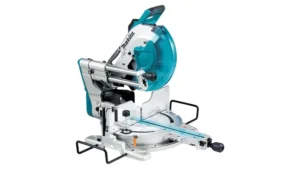
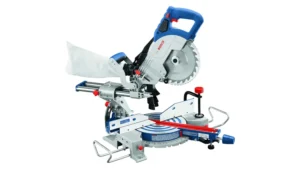

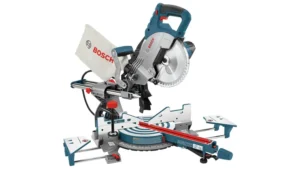

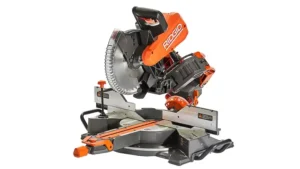
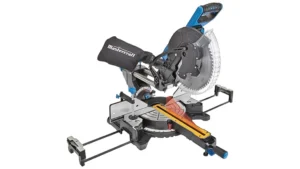
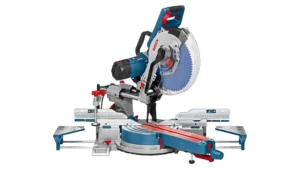
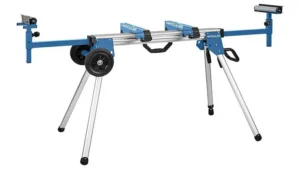
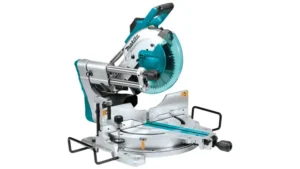

Leave your comment